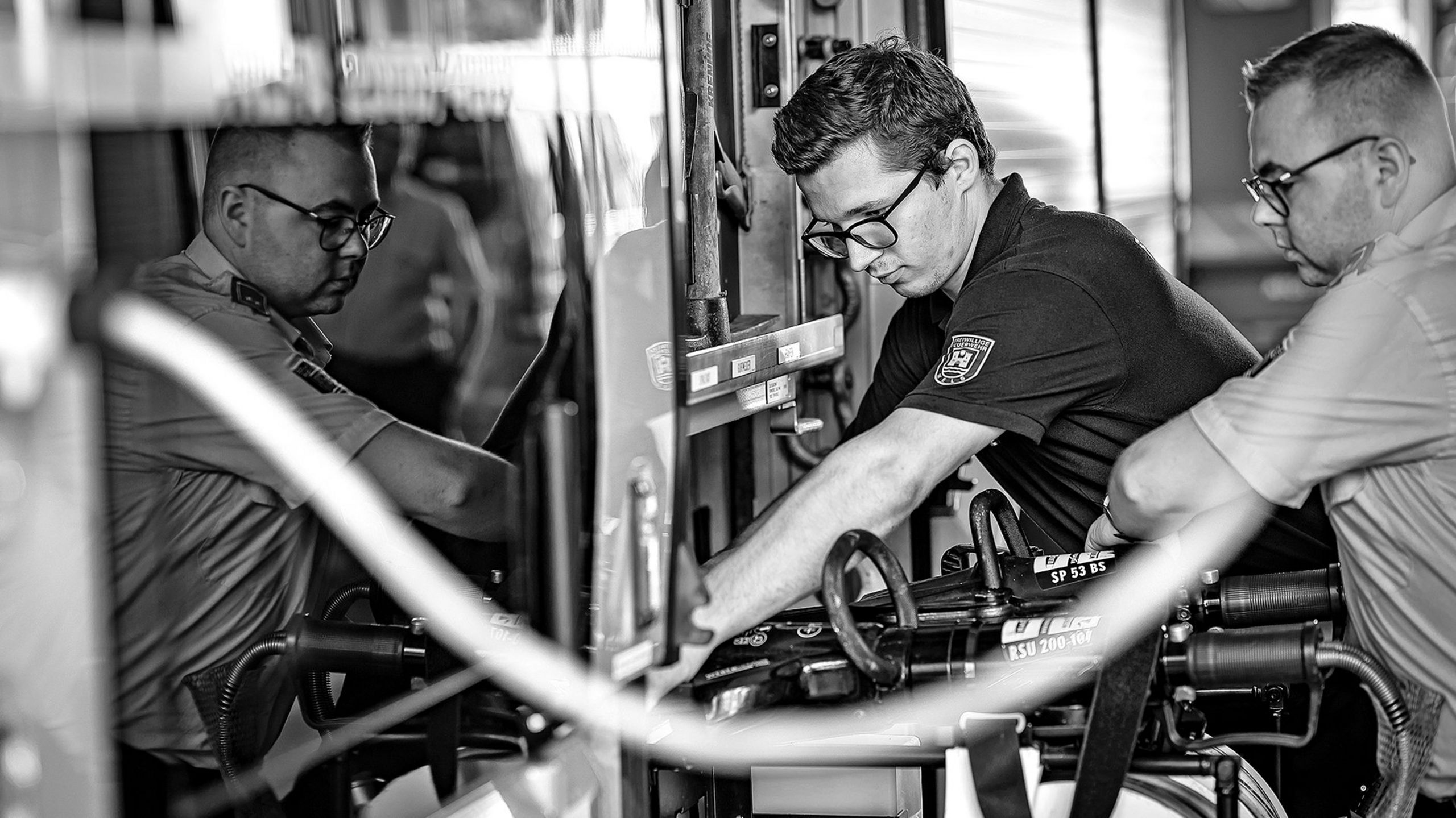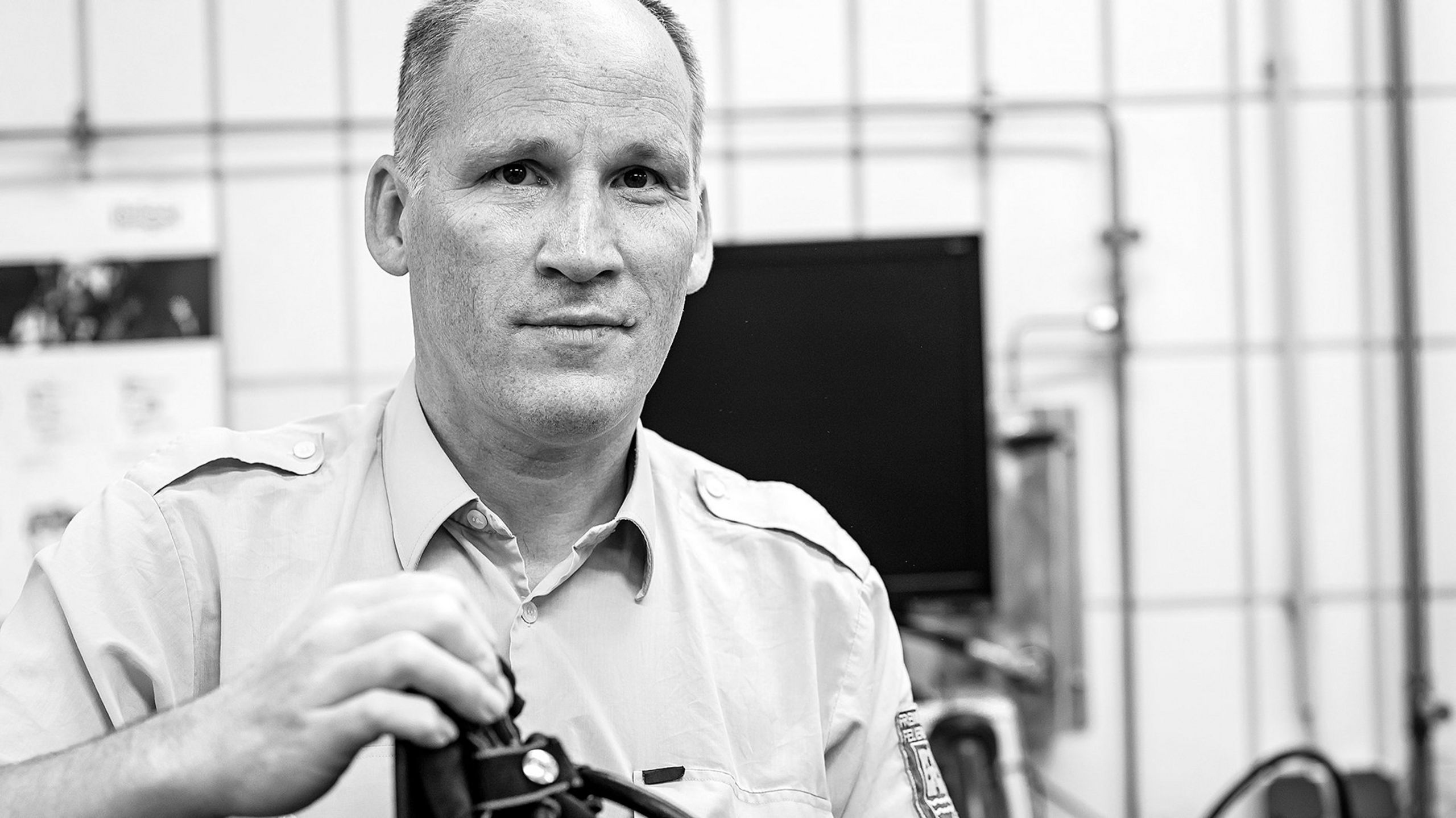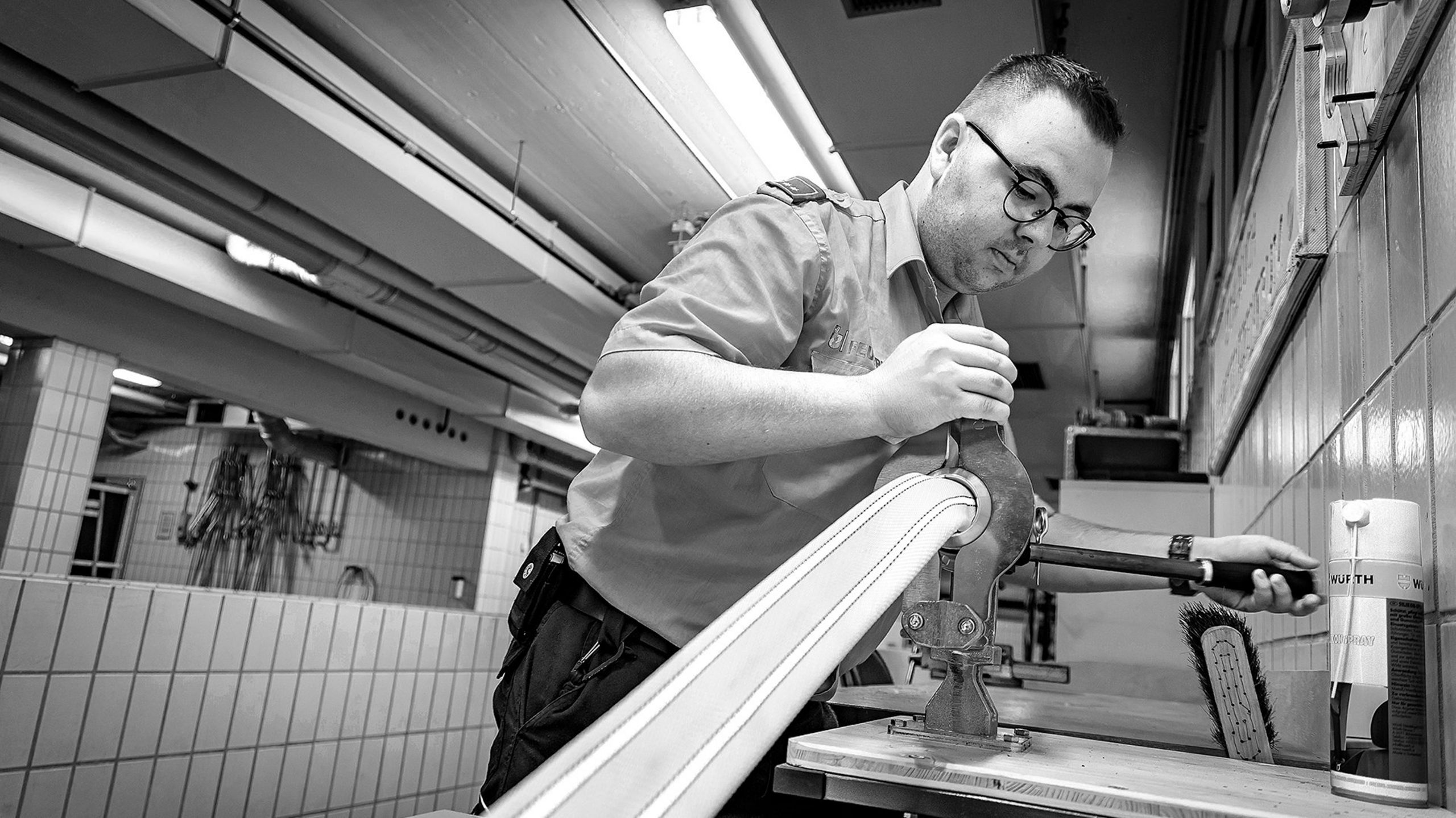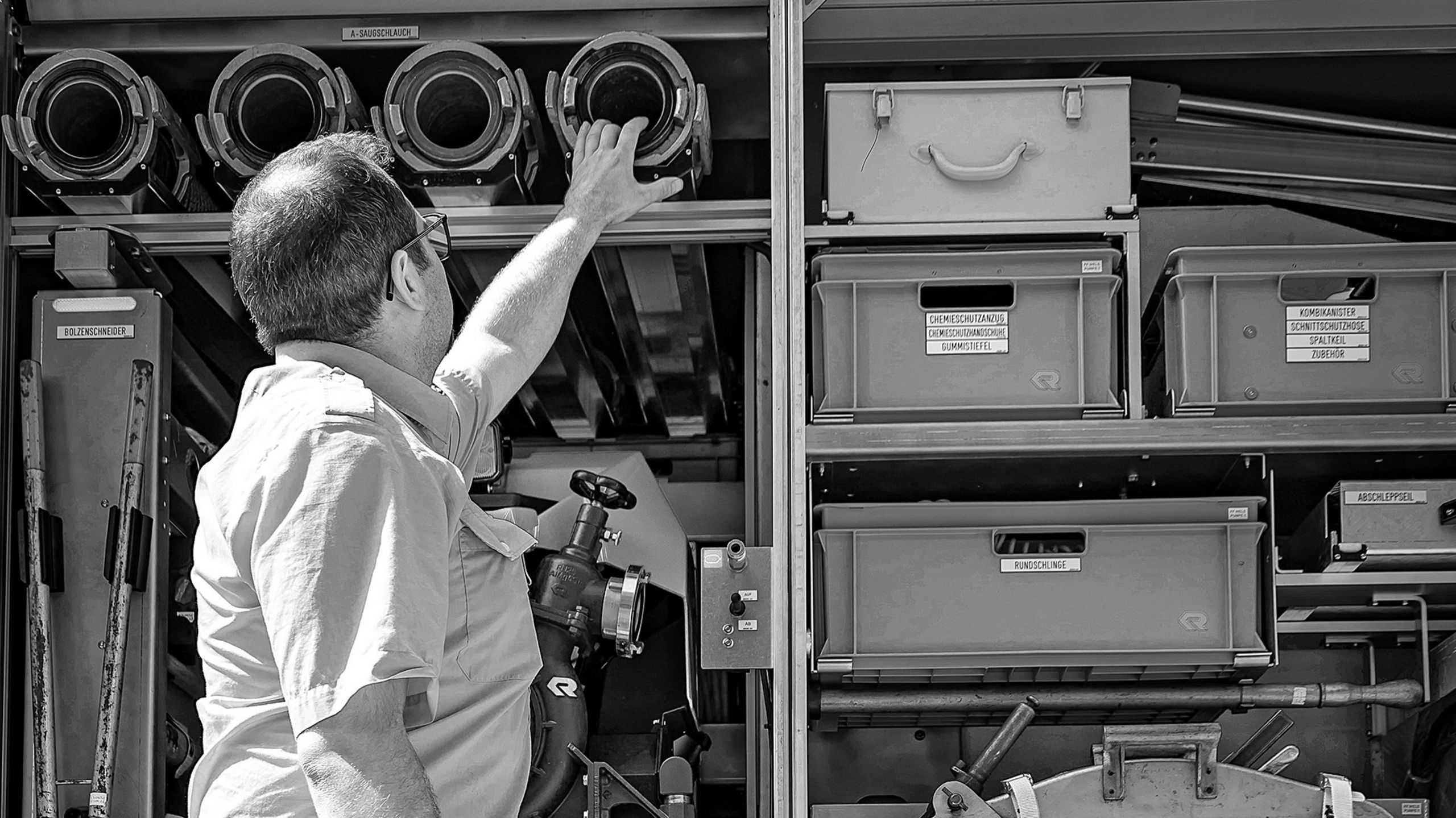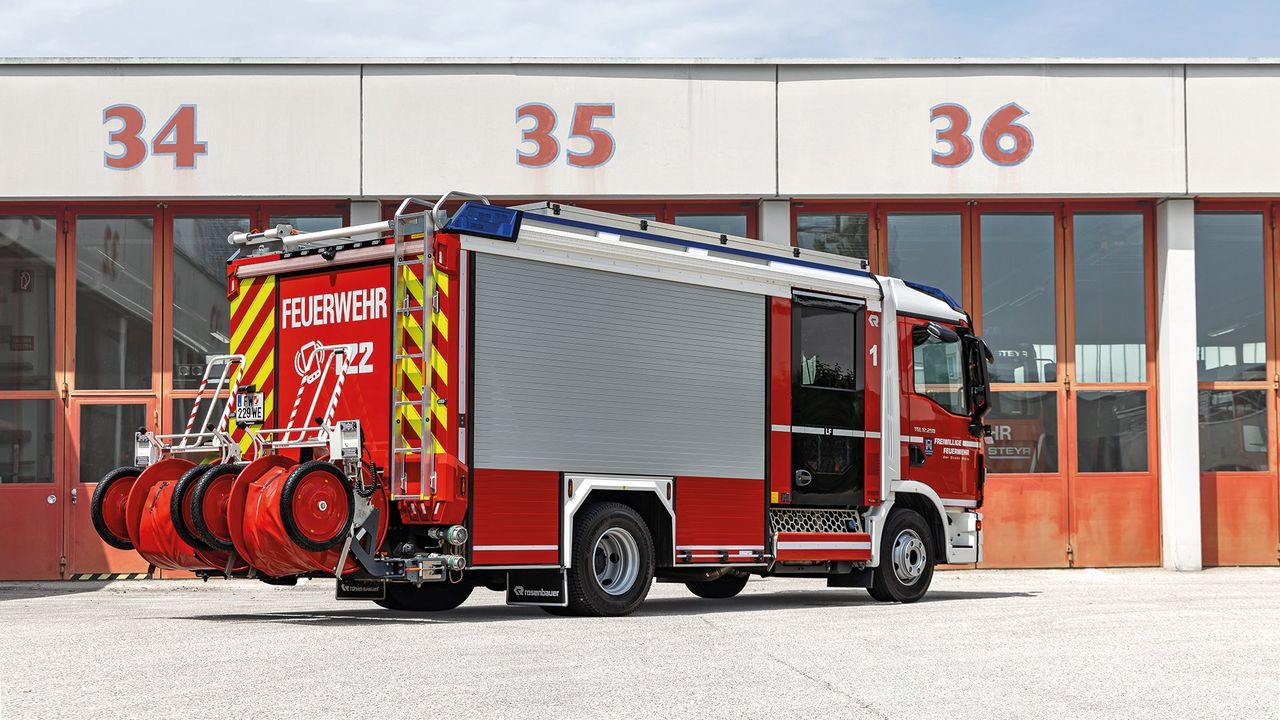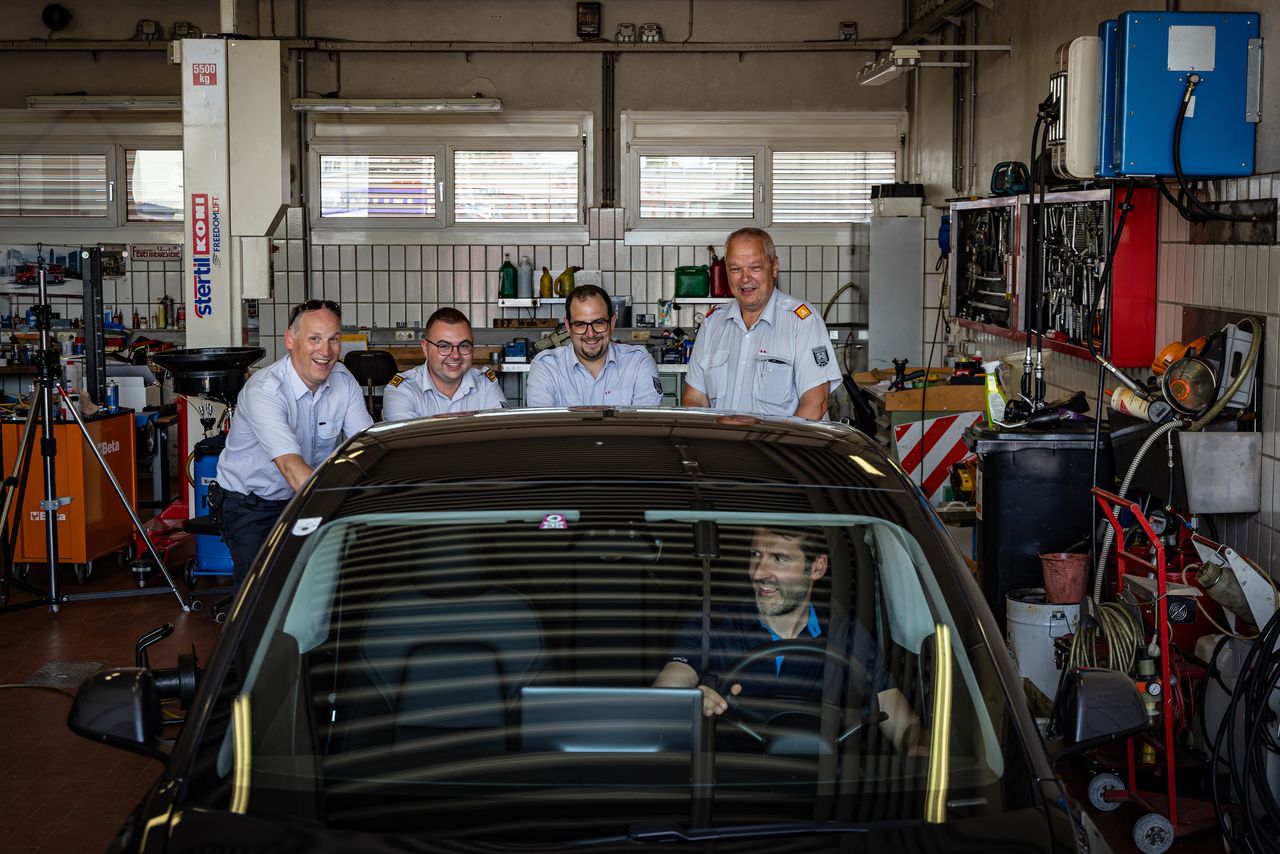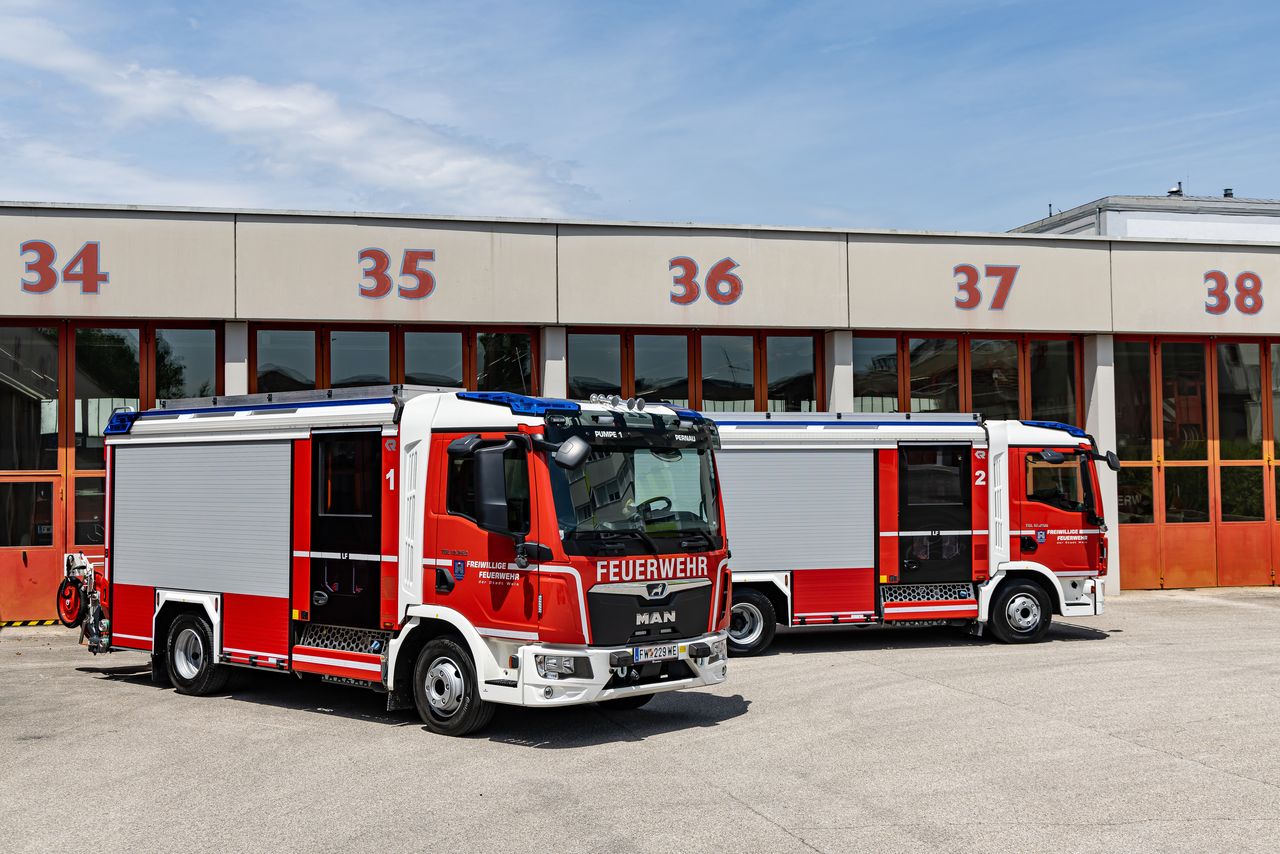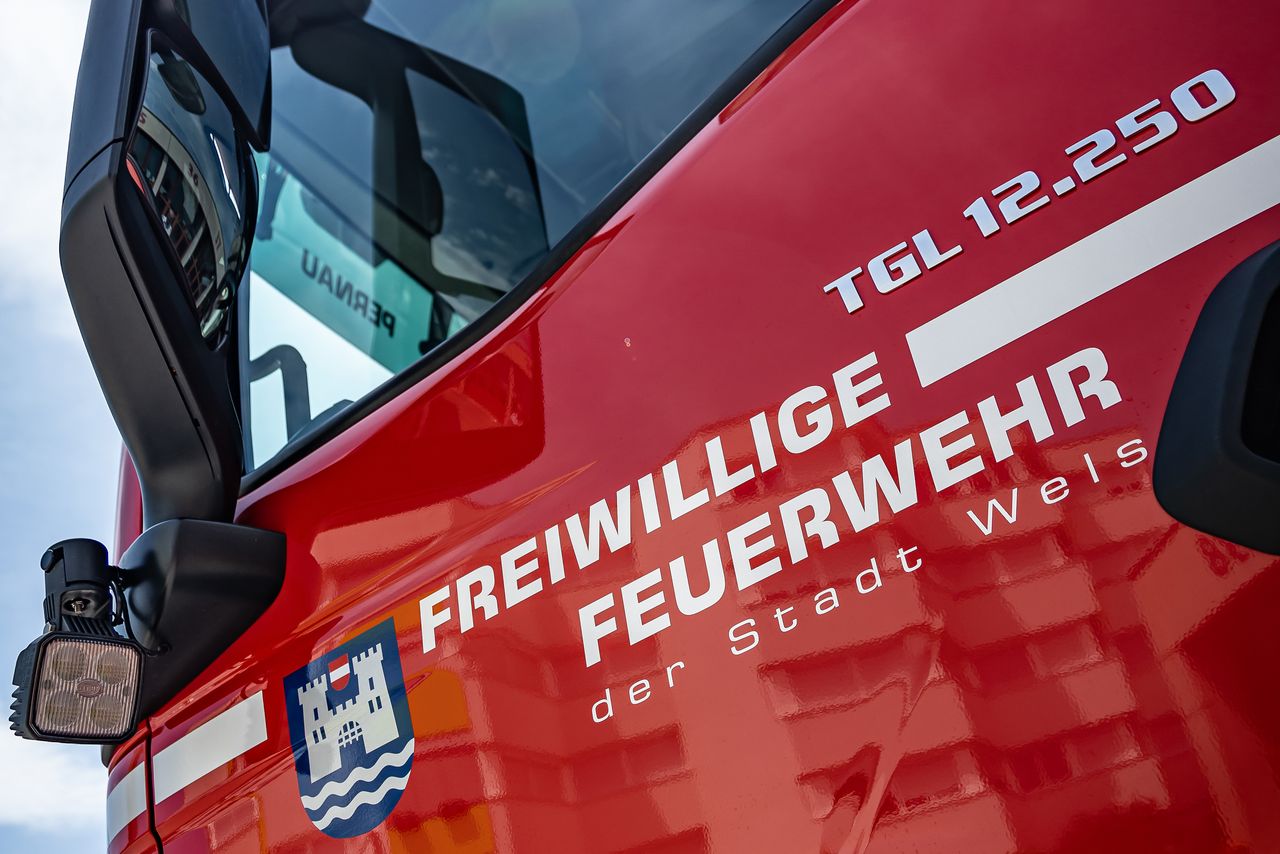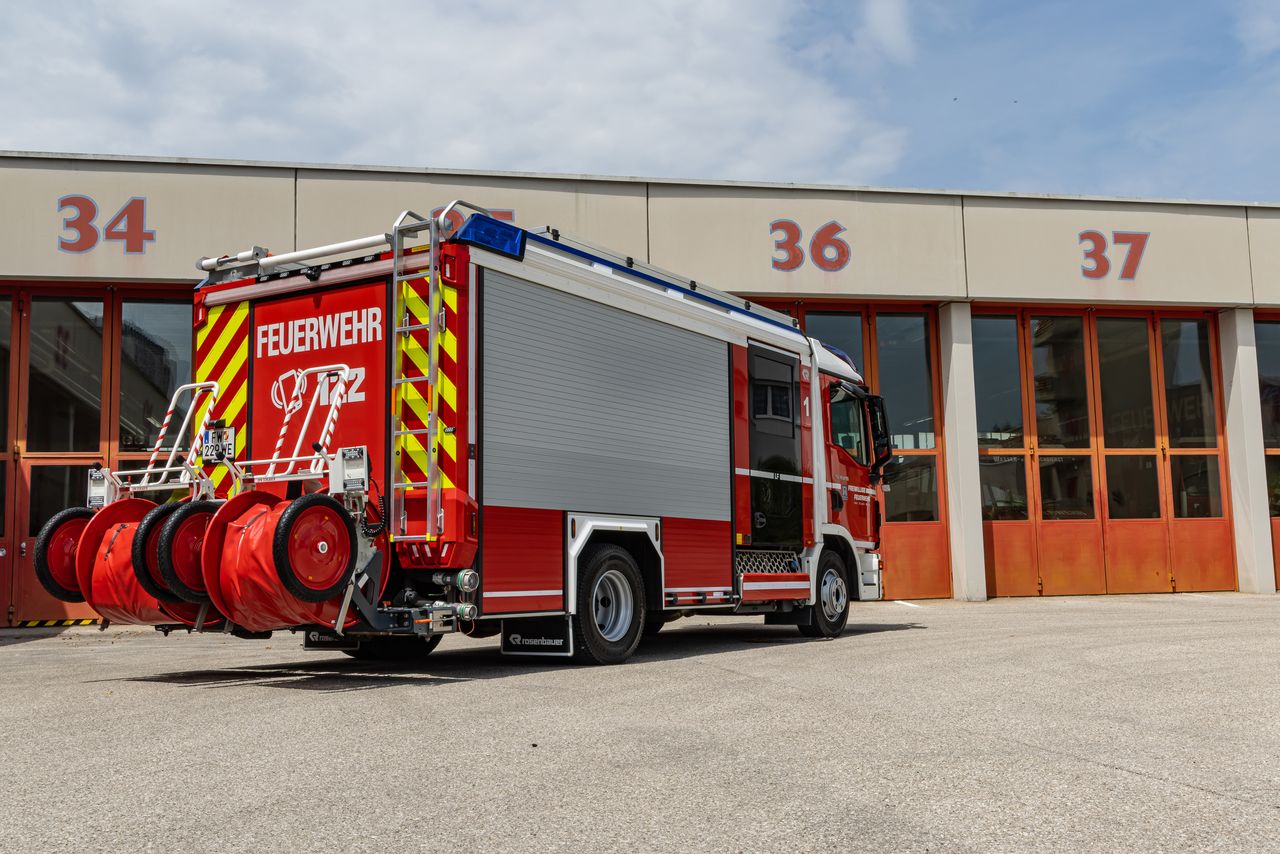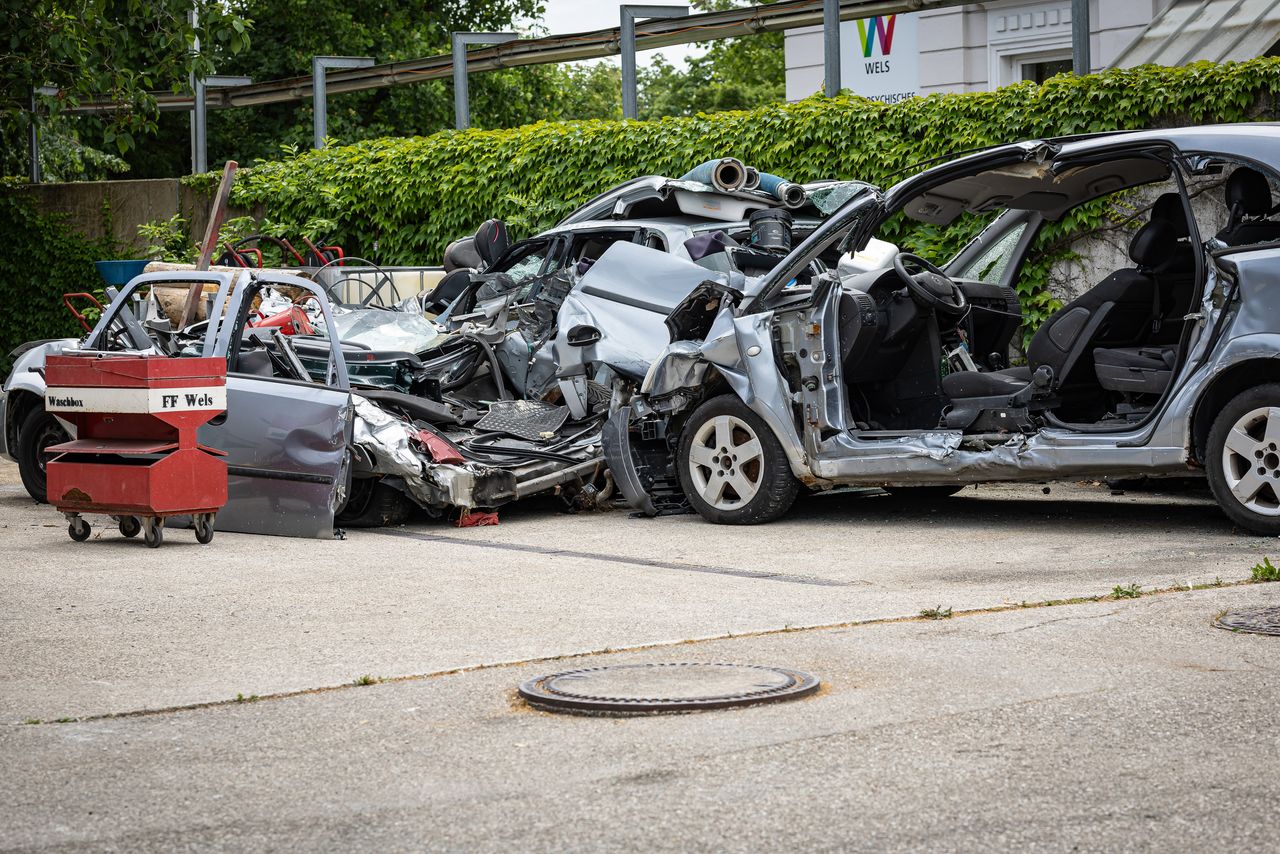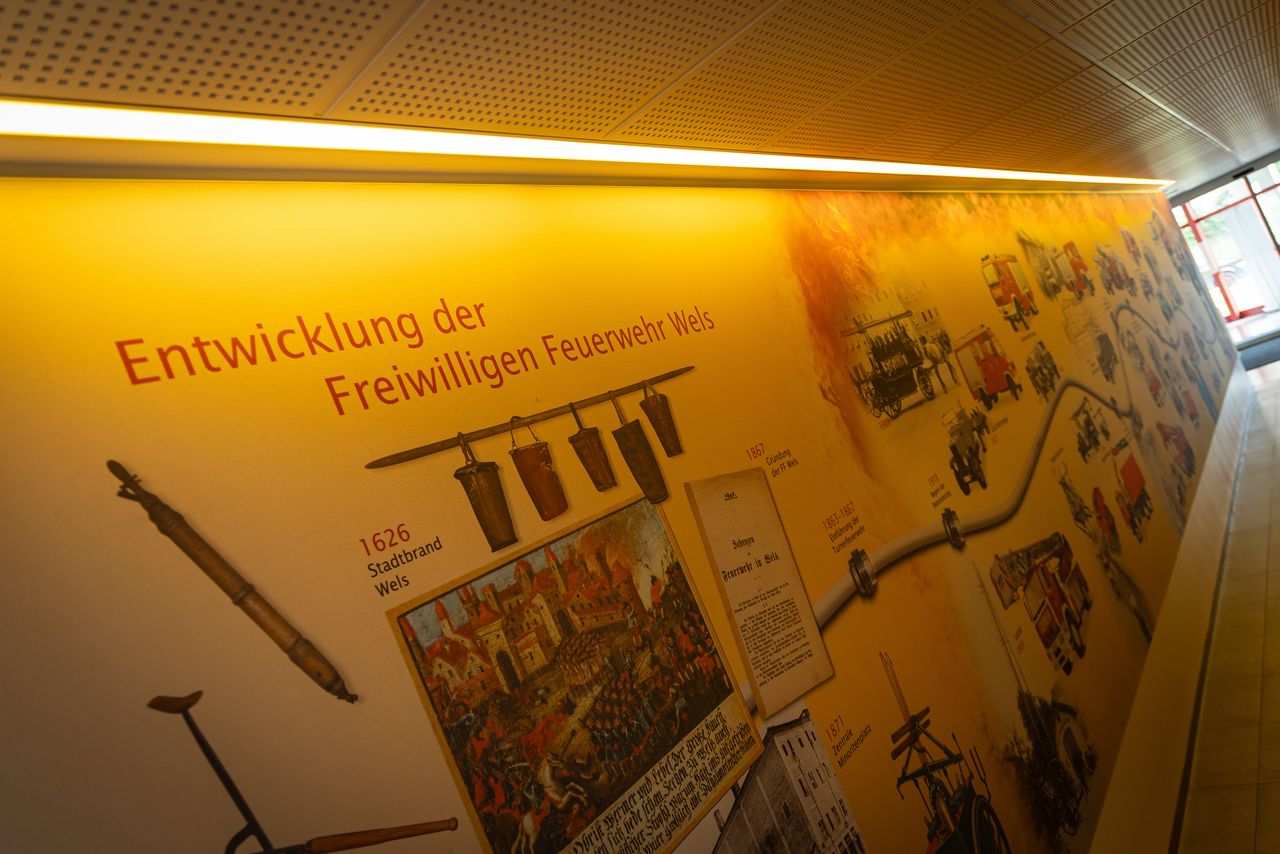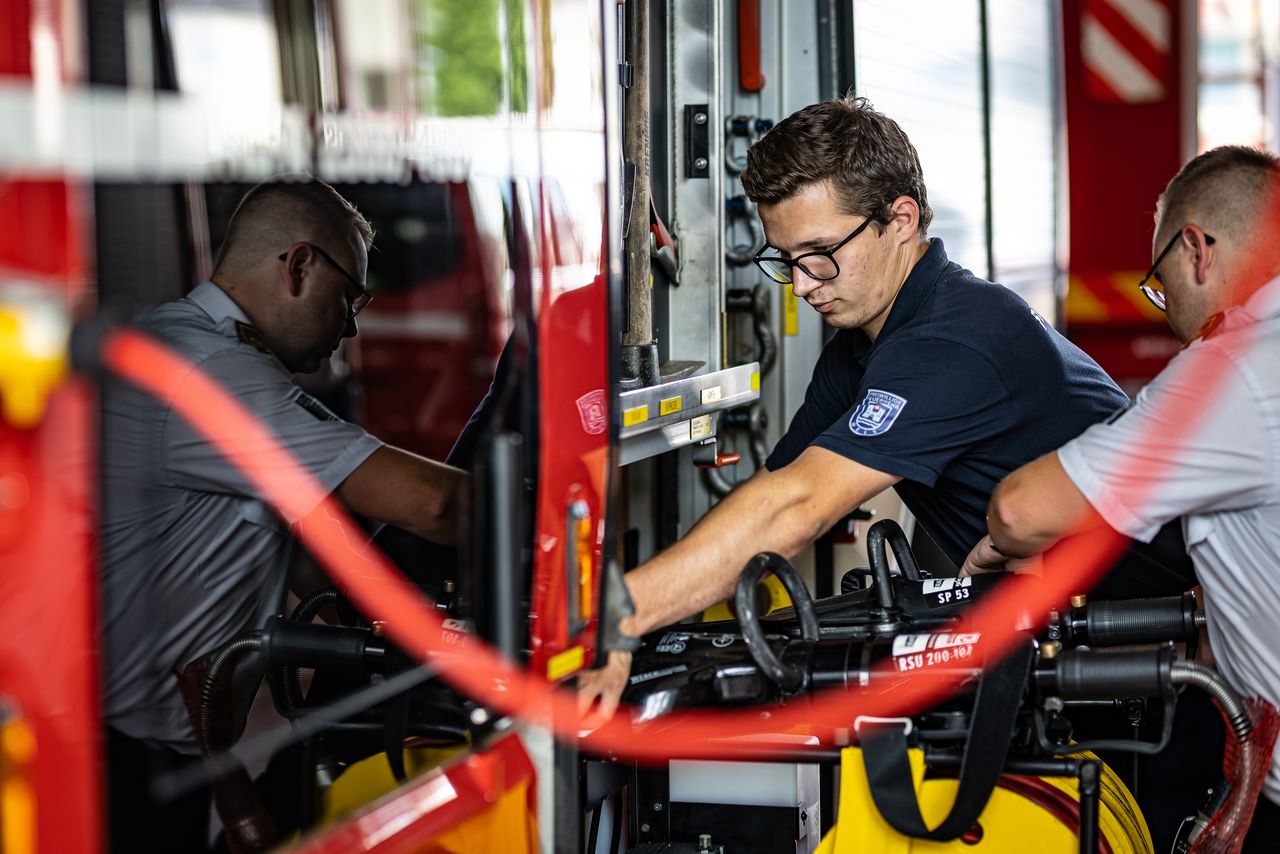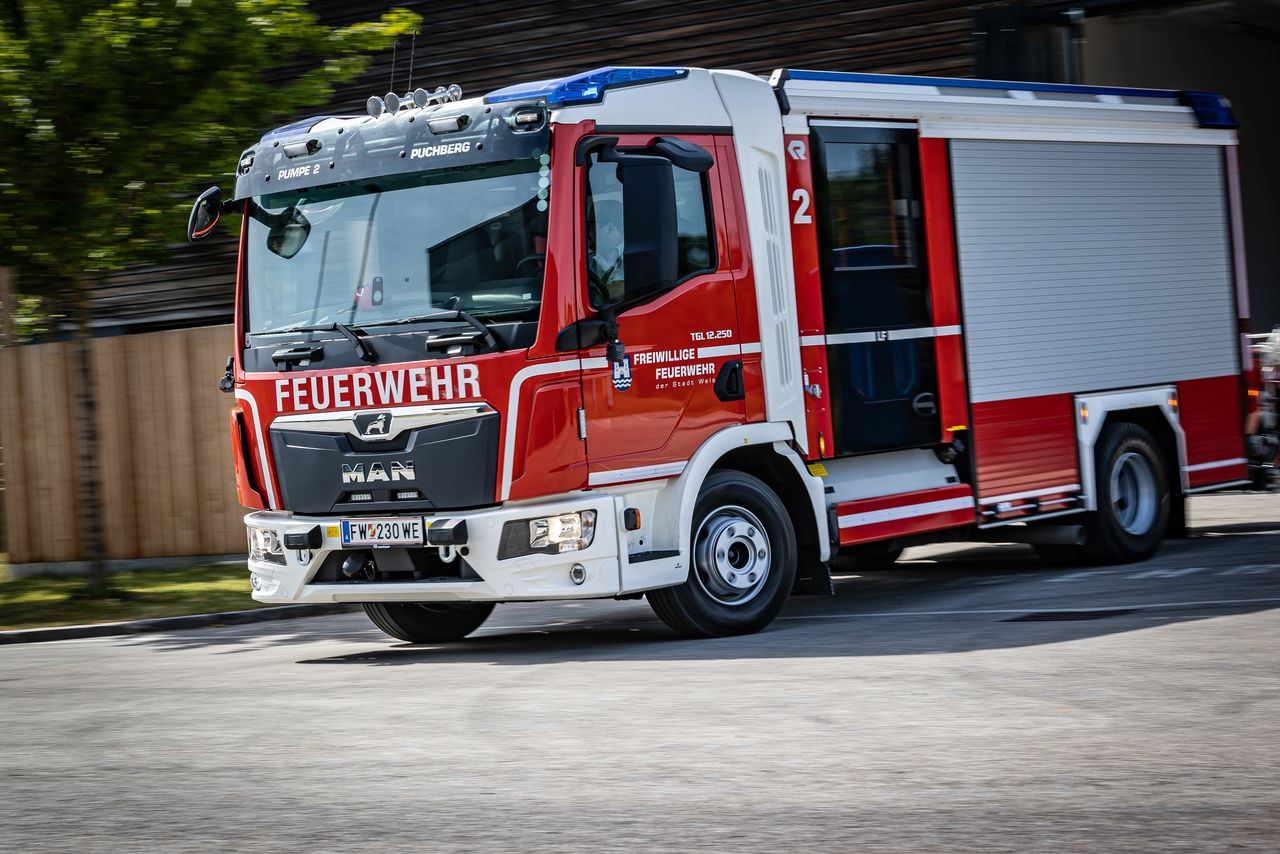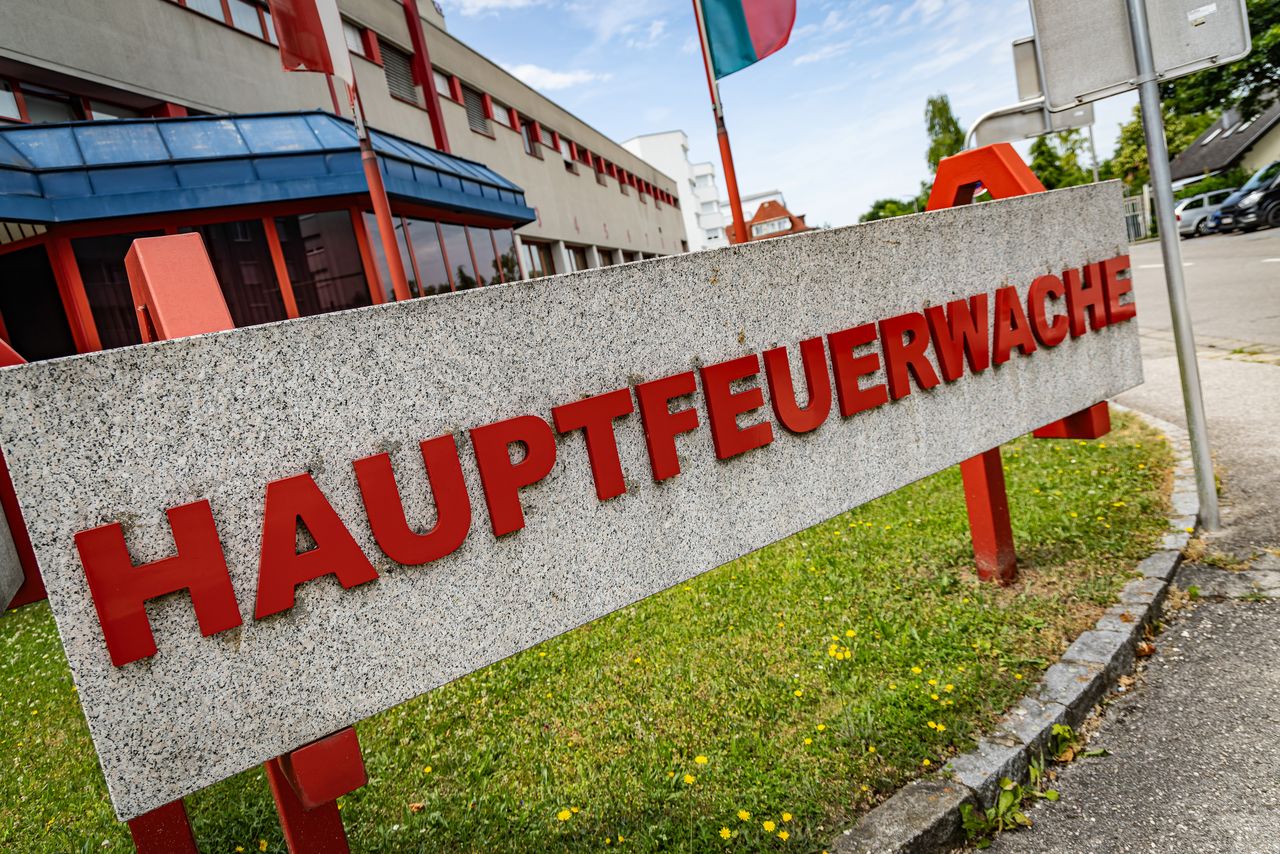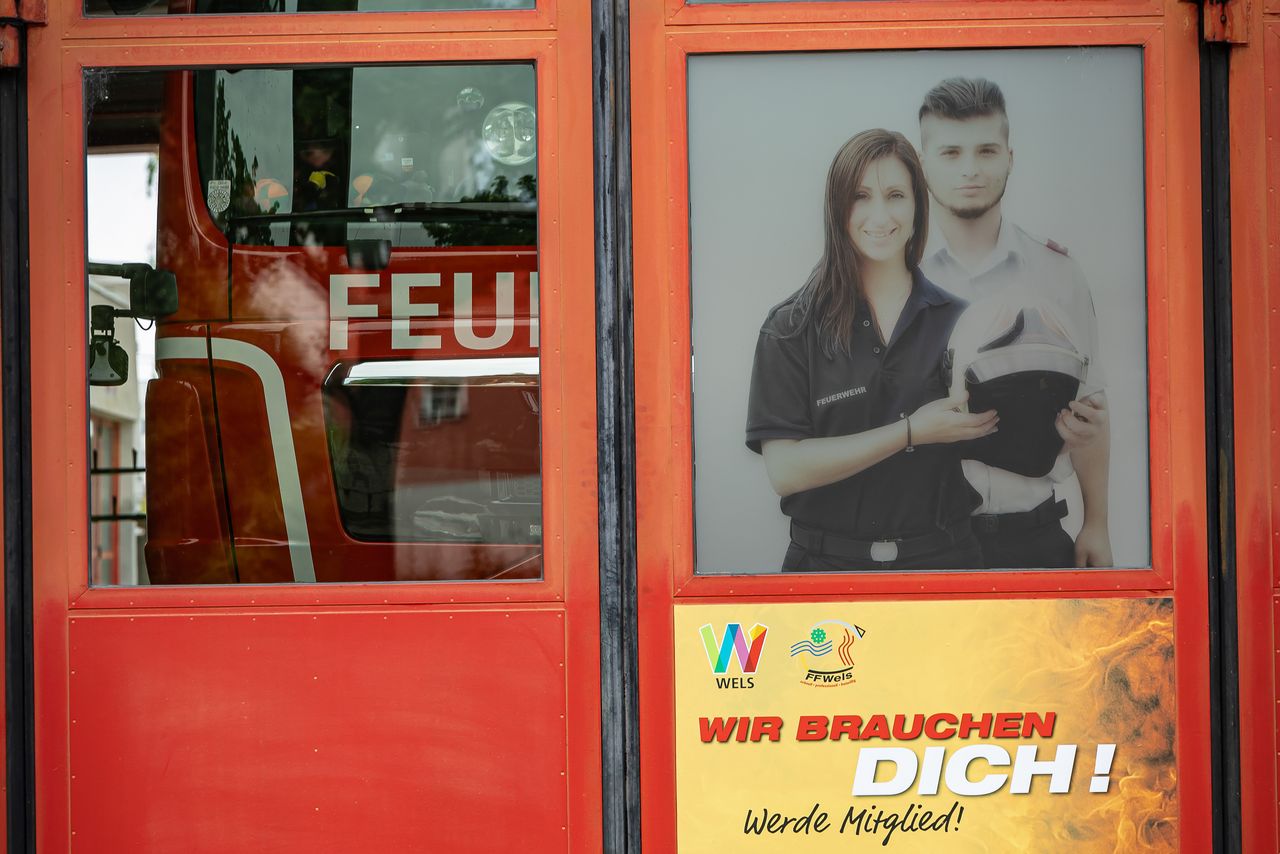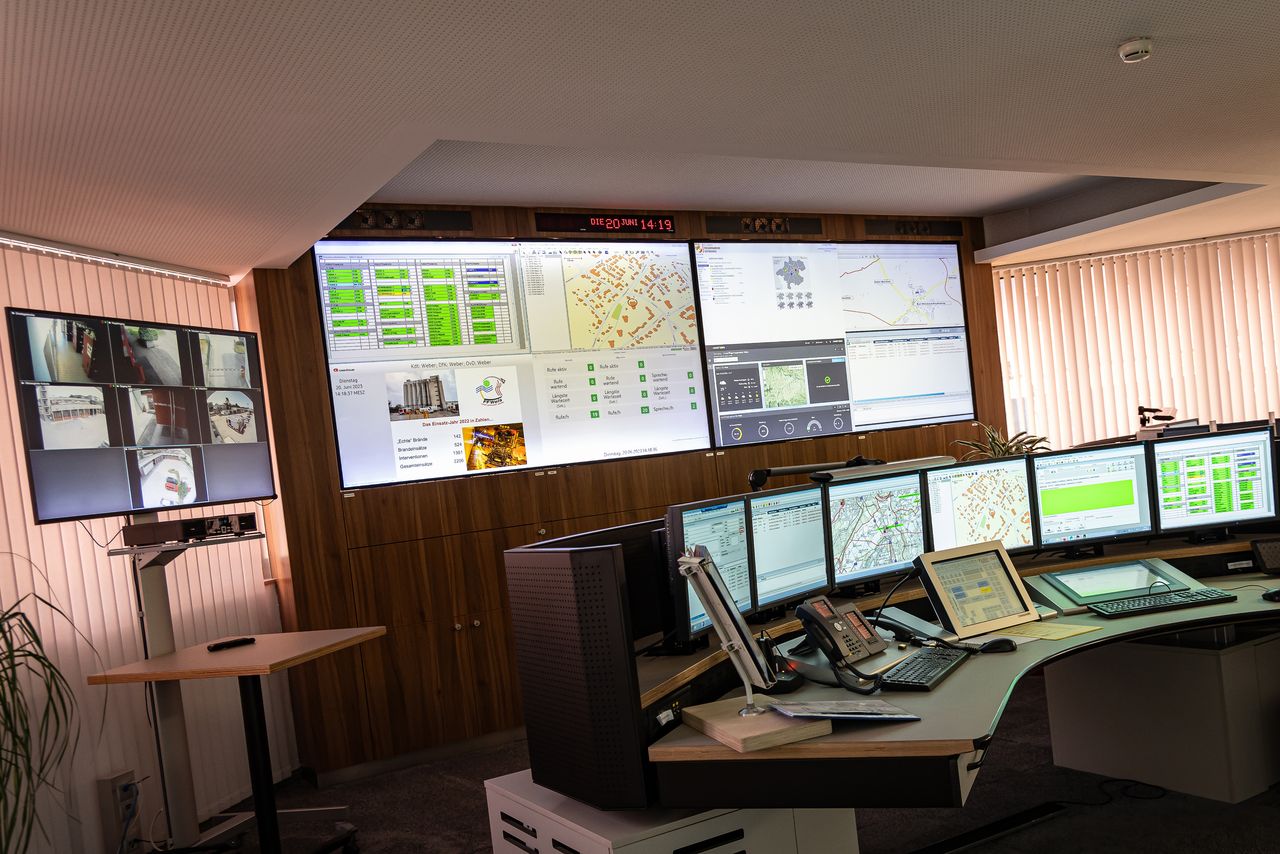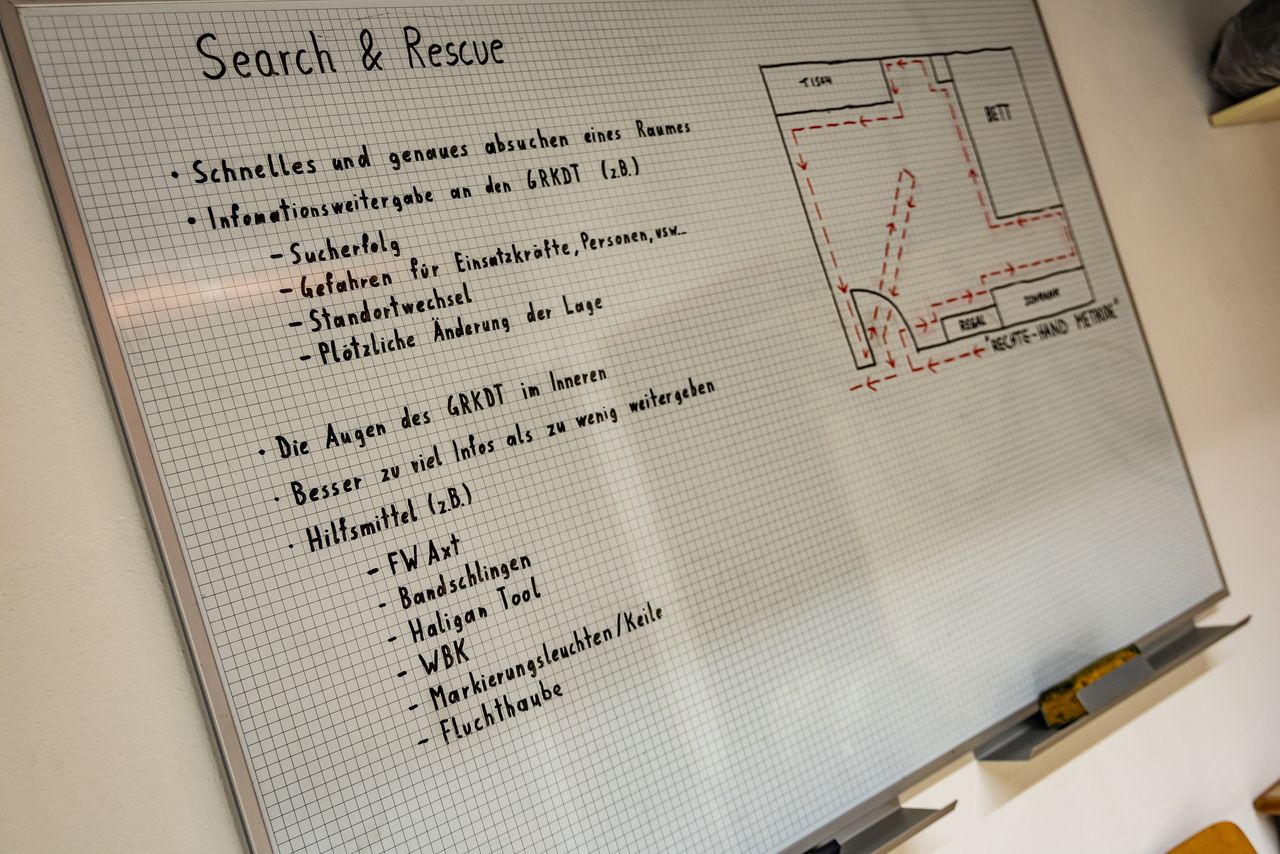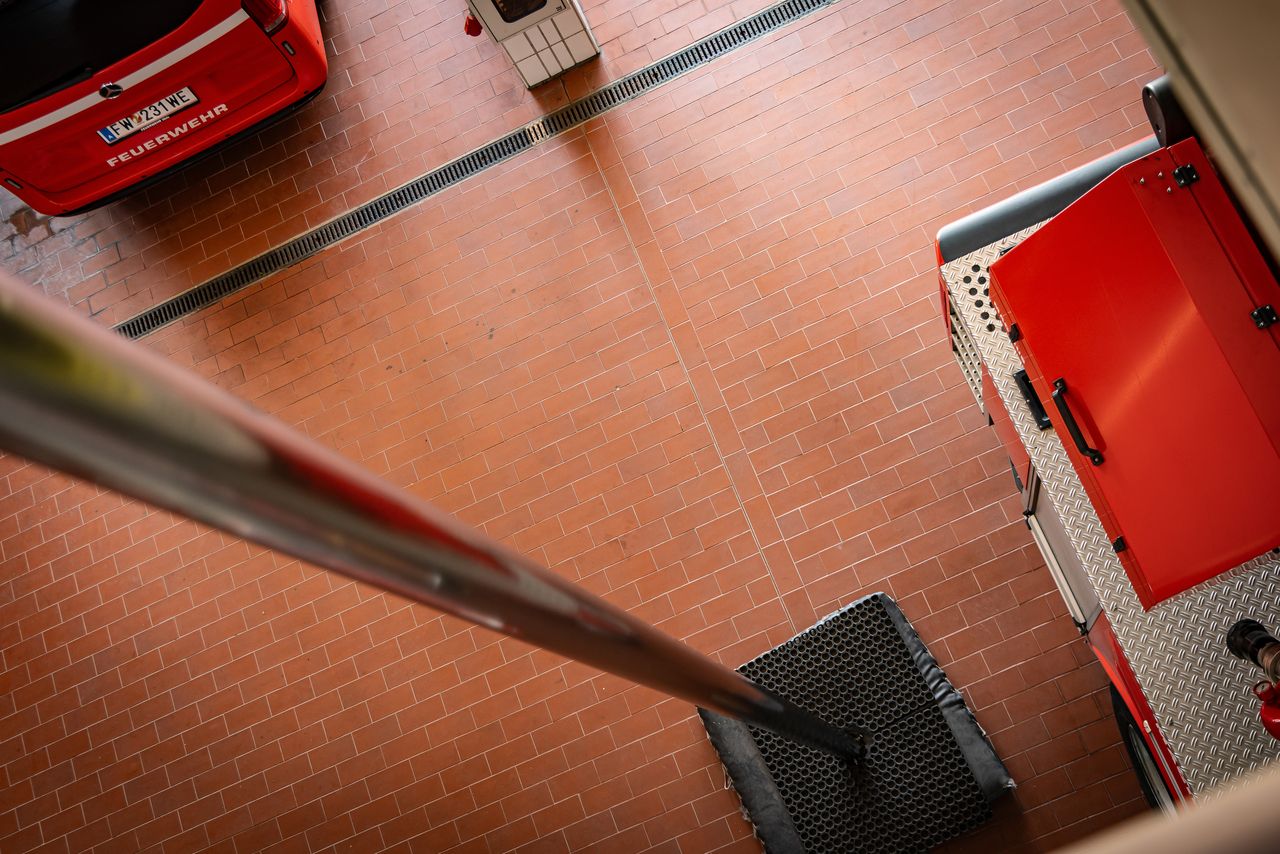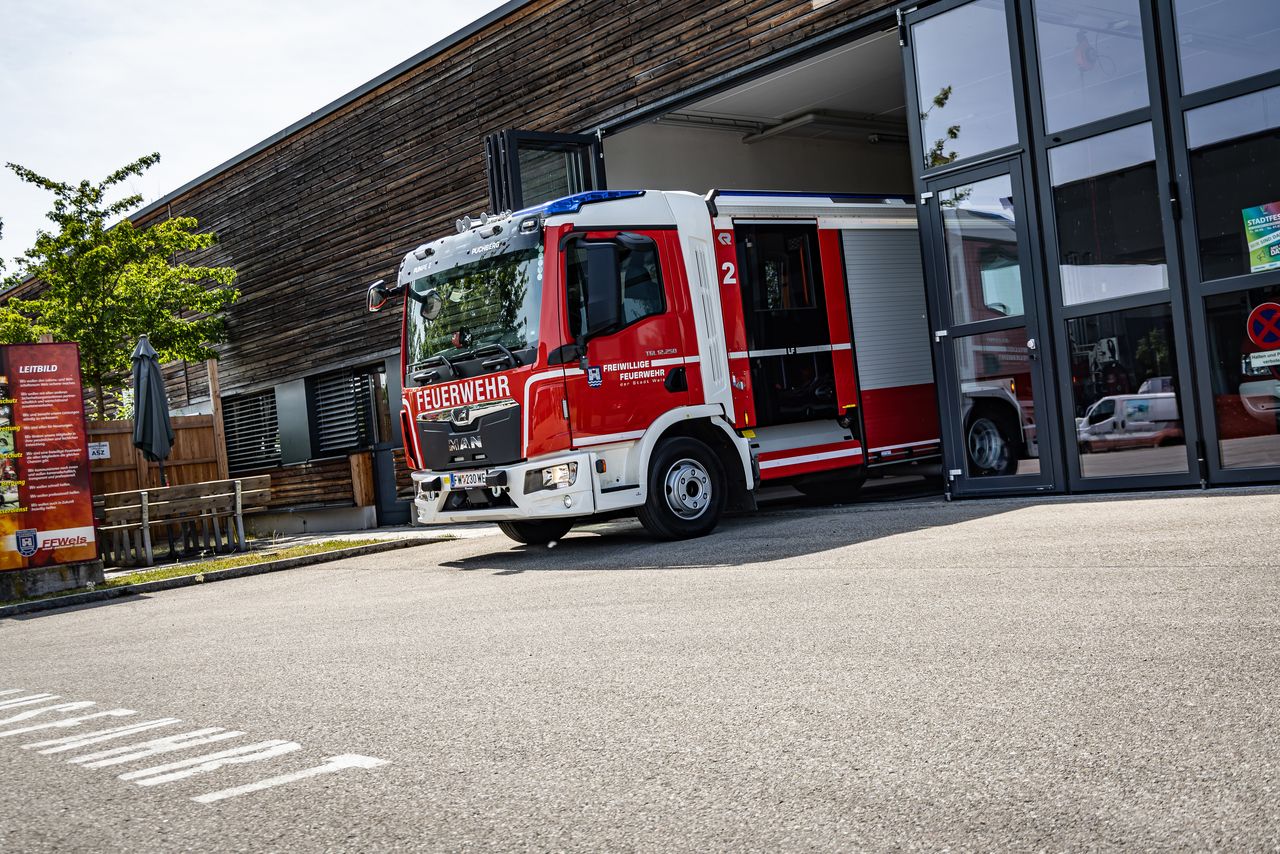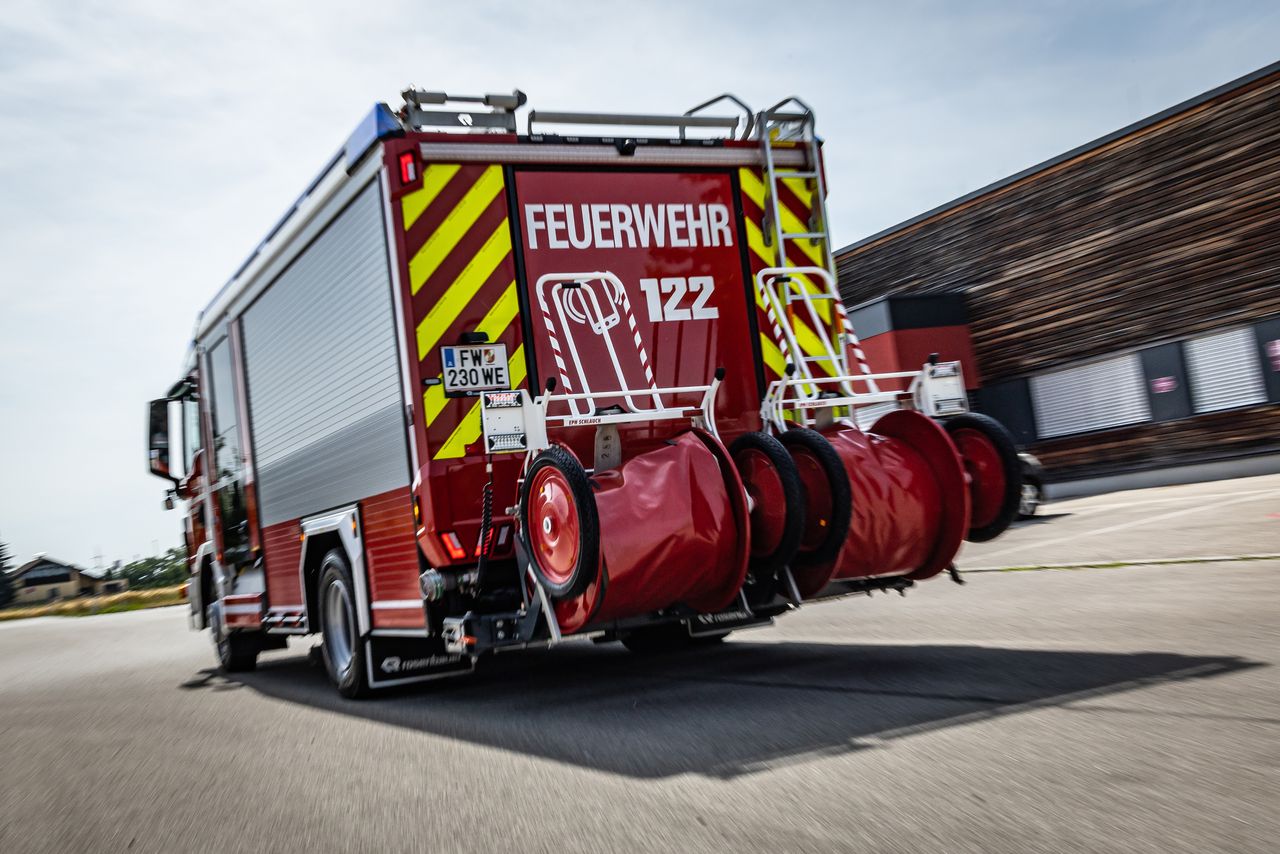Two compact
all-rounders.
Wels – city, country, river
Wels is the seventh-largest city in Austria and home to 66,000 people. They and the total area of forty-five square kilometers—including the land outside the city limits—are guarded, at least in terms of fire protection and rescue, by the Wels Fire Department, with its 144 firefighters—all of them volunteers. The fleet includes thirty land vehicles and five water-going vessels, as the river Traun delineates the city’s southern border.
One main fire station, three outstations
The main fire station is centrally located. This large building not only houses a garage for the emergency vehicles but also a control center, repair shops, and dressing rooms. This is where the self-contained breathing apparatuses are cleaned and serviced (as are the SCBAs of surrounding fire departments)—and used in drills in the basement. Strategic challenges are mastered along the way. One such challenge was equipping the three fire stations at the eastern, western, and northern tip of the city with vehicles. While they have always had firefighting and rescue vehicles to support the missions of the main station on site in the rendezvous system, placing an all-rounder in each outstation would significantly increase the efficiency.
Twelve tons that can pretty much do it all
This was the conclusion reached by the Wels Fire Commander Roland Weber and his predecessor, Franz Humer, together with their colleagues Siegfried Stögermair und Michael Strasser, who are both in charge of the fleet and equipment. “One day we sat around the table and took matters into our own hands,” Roland remembers the kick-off meeting for the vehicle acquisition.
When they saw a Rosenbauer CT Frame at a different fire department in Upper Austria, it soon became clear that this was the right superstructure for them. As its name suggests, the Compact Technology series features a particularly compact body with low removal height and high payload thanks to its lightweight construction.
The Rosenbauer CT Frame was mounted on a twelve-ton chassis with rear-wheel drive—all-wheel would have been superfluous in the urban area—to prepare the firefighters for almost all eventualities. The N35 pump on board is supplied by a 1,200-liter (317 US gallons) water tank; foaming agent can be integrated into the pump. Moreover, the FOX portable fire pump ensures that water “can also be transported over long distances,” as Siegfried is quick to add. Limbered onto the rear are two one-person hose reels—which have a long tradition in Wels unlike the rest of Austria and make for easy hose access and handling. Stowed on the roof are four scaling ladders. The cabin offers room for the driver and four other firefighters, who can all be supplied with respiratory protection. Integrated close-range and scene lighting make the light mast expendable.
Fewer fires, more storms
“The number of fires is going down, while storm operations are on the incline,” Roland reports. The trained firefighter is currently studying information technology. His current duties are operations and training. For Wels, he cites between 1,400 to 1,600 emergency operations, 120 of which are large-scale. Because of this development, the new vehicles are equipped with chainsaws, submersible pumps, and water suction devices. “Such a car can be used in first attacks but also as an addition to the overall fleet. A true all-rounder, and versatile to boot,” the fifty-three-year-old commander is happy to report. With the new CT Frame it doesn’t matter whether it’s the first to arrive on scene and starts the direct attack or supports another vehicle in the process.
Swift removal
Michael, like Siegfried, is a trained auto engineer. He is quite a bit shorter than Roland. After raising the emergency vehicle’s electric shutters in a flash—which can also be done via central control and automatically with the scene arrival button—he demonstrates where the other strengths of the CT Frame lie. The load compartments go all the way down to the axle level, and even the topmost sections are easy to access without pull-out steps or the like.
It seems as if the project has been brought to a successful end, and its three remaining “founding fathers”—all of whom have been members of the Wels Fire Department since their time as civilian servants—have reached their goal. But wait—there are three outposts and only two vehicles? Well, with the beginning of next year at the latest, the engine of CT Frame number 3 will rev as well. And so, every corner of Wels will have its own all-rounder in their garage.
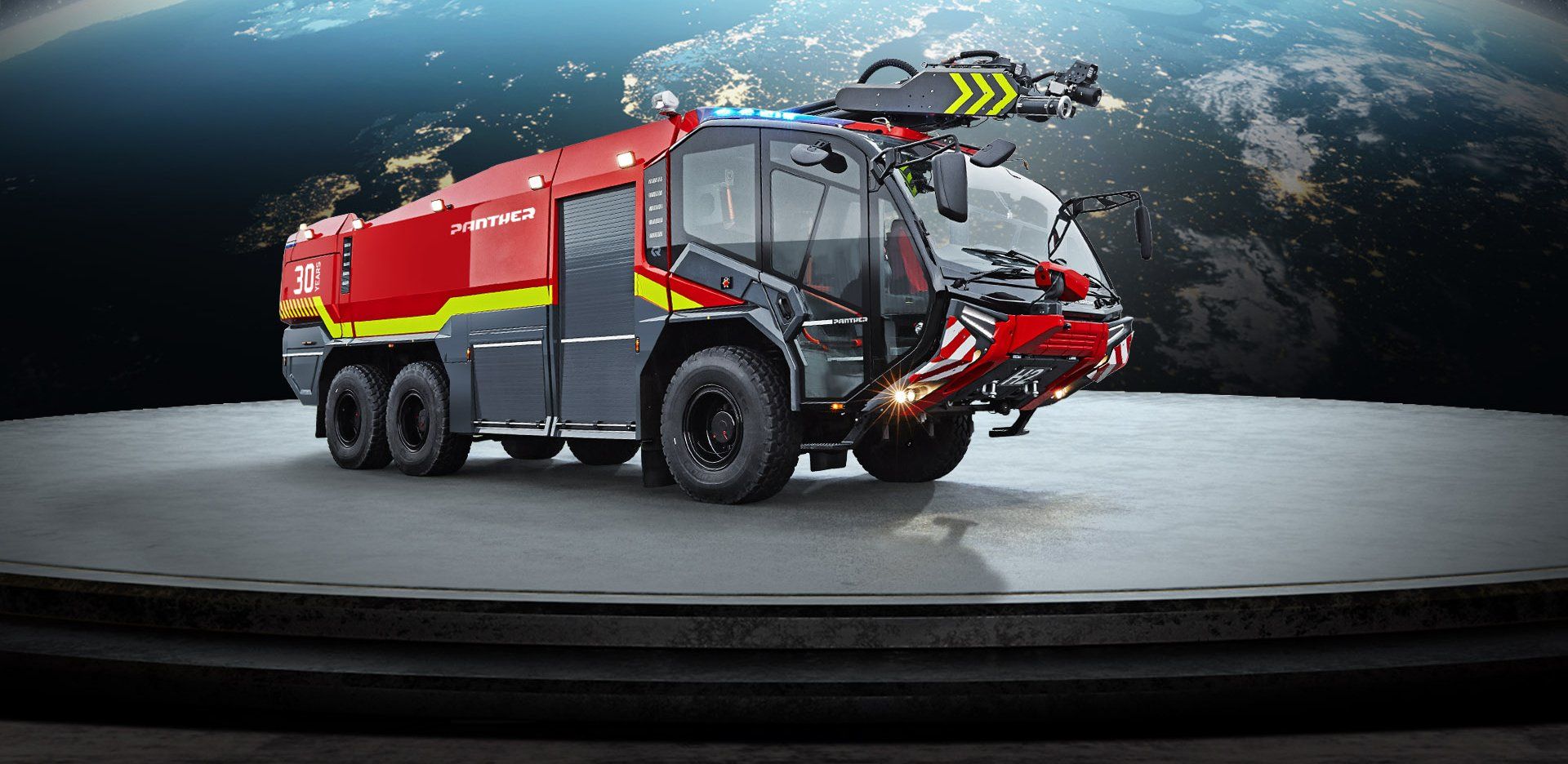
Register now for the Rosenbauer Newsletter & always be well informed!
Contact
Rosenbauer International AG
Paschinger Str. 90
4060 Leonding, Austria
office@rosenbauer.com
